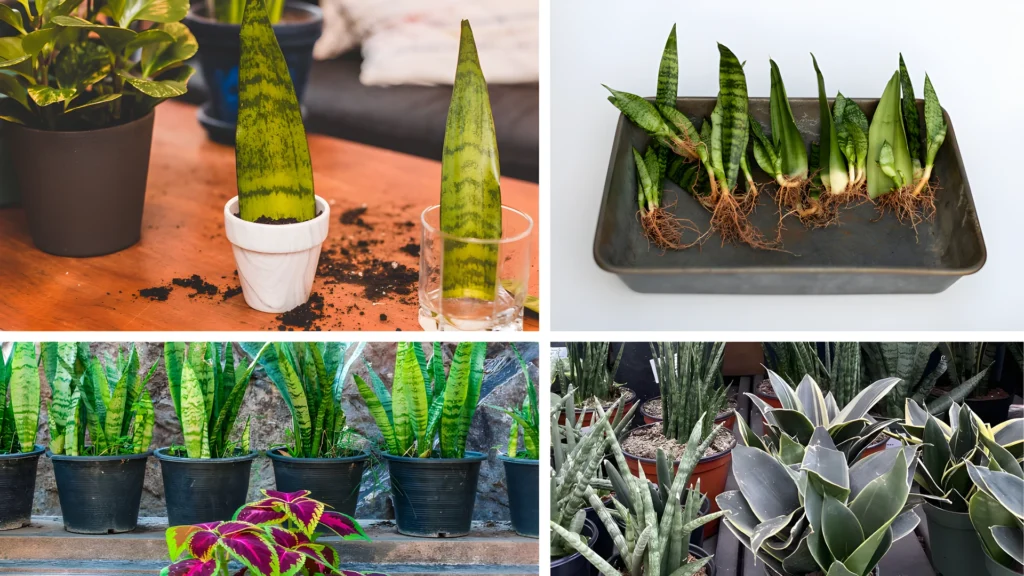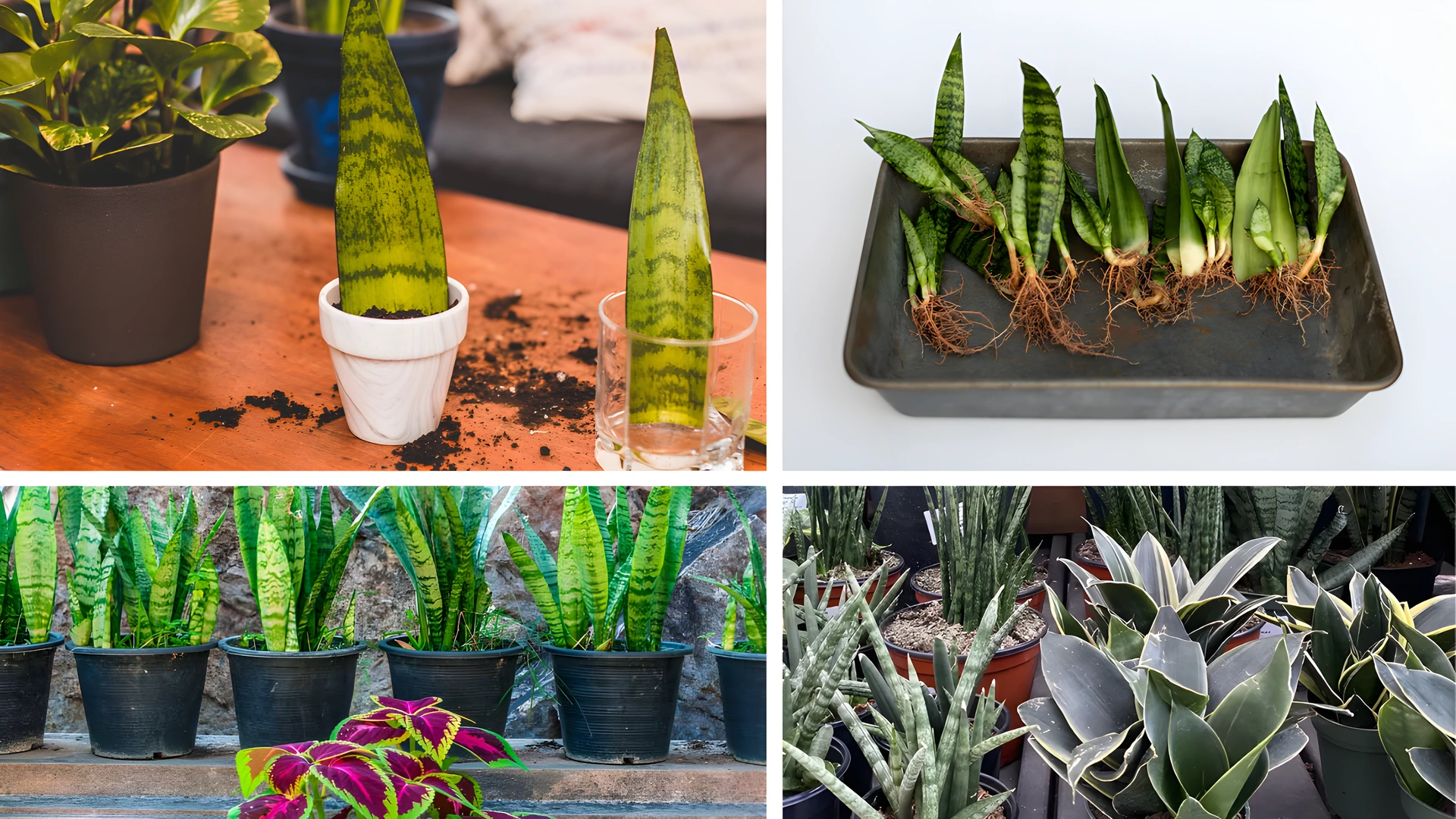Join on WhatsApp
Get the latest updates directly on WhatsApp – motivation, news & more!
If you’re looking to expand your indoor jungle or share your favorite houseplant with friends, learning easy snake plant propagation at home is a great skill to master. Snake plants, also known as Sansevieria or mother-in-law’s tongue, are one of the easiest houseplants to propagate due to their hardy nature and low maintenance requirements. In this step-by-step guide, we’ll walk you through everything you need to know to propagate your snake plant successfully from the comfort of your home—even if you’re a complete beginner.

Why Choose Snake Plant Propagation at Home?
Snake plants are ideal for home propagation because they’re forgiving, resilient, and grow well in various conditions. They don’t require constant attention, making them perfect for busy individuals or those new to gardening. By choosing snake plant propagation at home, you not only save money on buying new plants but also get to enjoy the rewarding process of watching your new plants grow from just a few simple cuttings.
Supplies You Need for Easy Snake Plant Propagation at Home
Before you start, gather the following tools and materials to make the process smooth and efficient:
- A healthy, mature snake plant
- Clean, sharp scissors or pruning shears
- A clean jar or glass for water propagation
- Fresh potting soil (preferably cactus or succulent mix)
- Small pots with drainage holes
- A well-lit spot (indirect sunlight is best)
Having these basic supplies ready will help ensure a smooth and successful snake plant propagation at home experience.
Step-by-Step Guide to Propagate a Snake Plant in Water
One of the most popular and visually satisfying methods of snake plant propagation at home is water propagation. Here’s how to do it:
- Choose a healthy leaf: Pick a strong, green leaf from the mother plant. Avoid any that are yellowing or damaged.
- Cut it cleanly: Use sterilized scissors to cut the leaf off at the base.
- Let it dry: Place the cut leaf on a paper towel for 1–2 days. This helps prevent rot by allowing the wound to callous.
- Place in water: Once dried, place the cut end in a jar of water. Make sure only the bottom inch is submerged.
- Wait patiently: Change the water every few days and keep the jar in indirect light. Roots typically begin to appear in 2–6 weeks.
Water propagation allows you to observe root growth and adds a decorative touch to your home while practicing easy snake plant propagation.
How to Propagate a Snake Plant in Soil
Another reliable technique for easy snake plant propagation at home is planting directly into soil. It’s less decorative than water propagation but often leads to faster growth.
- Cut a leaf into sections: Each section should be about 3–4 inches long.
- Dry the cuttings: Let the cuttings dry for a day or two to prevent rot.
- Plant the right way up: Make sure to remember which side is the bottom—planting them upside down won’t work.
- Place in well-draining soil: Insert the cuttings into a succulent or cactus mix.
- Water lightly: Keep the soil barely moist. Overwatering can cause rot.
With proper care, you’ll see new growth from the base of each cutting, confirming a successful snake plant propagation at home.
Dividing Snake Plants for Propagation
For an even easier method of snake plant propagation at home, you can divide the root ball of an established plant. This technique works best with mature snake plants that have multiple shoots or offshoots.
- Remove the plant from its pot: Gently shake off excess soil.
- Separate the rhizomes: Use a clean knife to divide the root clump into sections, ensuring each has at least one healthy leaf and some roots.
- Replant immediately: Place each new section into its own pot with fresh soil.
- Water sparingly: After a few days, water the new plants lightly to help them settle.
This method gives you full-grown plants instantly and is the fastest way to achieve snake plant propagation at home without waiting for roots to form.
Common Mistakes to Avoid During Snake Plant Propagation
Even though it’s labeled as easy snake plant propagation at home, there are a few common pitfalls that can prevent success:
- Overwatering: Snake plants hate wet feet. Too much water causes rot quickly.
- Insufficient light: While they tolerate low light, bright indirect light speeds up propagation.
- Using unclean tools: Dirty scissors or knives can introduce disease to your plant.
- Planting upside down: Make sure each cutting is placed with the correct side down.
Avoiding these mistakes ensures a smoother propagation process and healthier new plants.
Caring for New Snake Plant Propagations at Home
Once you’ve successfully rooted or divided your plants, care is crucial. Here’s how to make sure your new plants thrive:
- Lighting: Keep your propagated snake plants in bright but indirect sunlight.
- Watering: Water only when the top inch of soil is dry. New roots are sensitive to excess moisture.
- Humidity: Snake plants don’t need high humidity, making them perfect for standard indoor conditions.
- Fertilizing: After 1–2 months, begin using a diluted succulent fertilizer once a month during the growing season.
By giving your new plants the right environment, your snake plant propagation at home will turn into healthy, established plants in no time.
Benefits of Learning Easy Snake Plant Propagation at Home
Aside from saving money and expanding your plant collection, snake plant propagation at home has several benefits:
- Sustainability: Propagating at home reduces waste and reliance on commercially grown plants.
- Gift giving: A homegrown snake plant makes a thoughtful and eco-friendly gift.
- Therapeutic hobby: Caring for plants and watching them grow is a calming, rewarding experience.
- Aesthetic appeal: Propagation adds greenery to your home and enhances your indoor décor.
Conclusion: Mastering Easy Snake Plant Propagation at Home
Whether you’re using water, soil, or division, easy snake plant propagation at home is a rewarding and beginner-friendly process that anyone can master. With minimal supplies and a bit of patience, you can turn one snake plant into many, adding beauty and greenery to every corner of your home. Following the right steps and caring for your new plants properly ensures long-term success. So grab your scissors, pick a healthy leaf, and start your propagation journey today—your future indoor garden will thank you.


